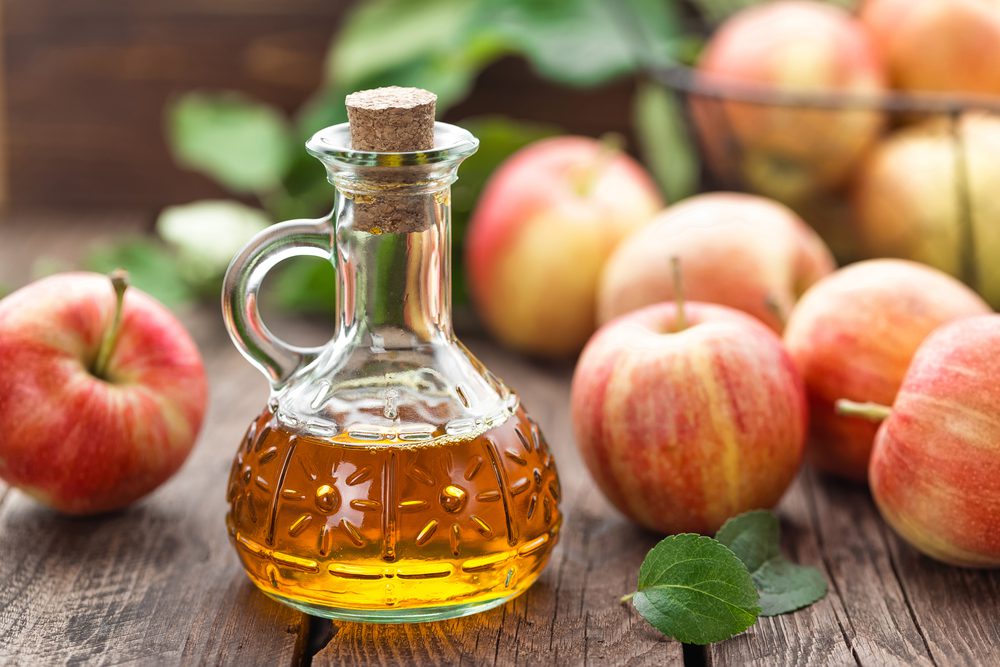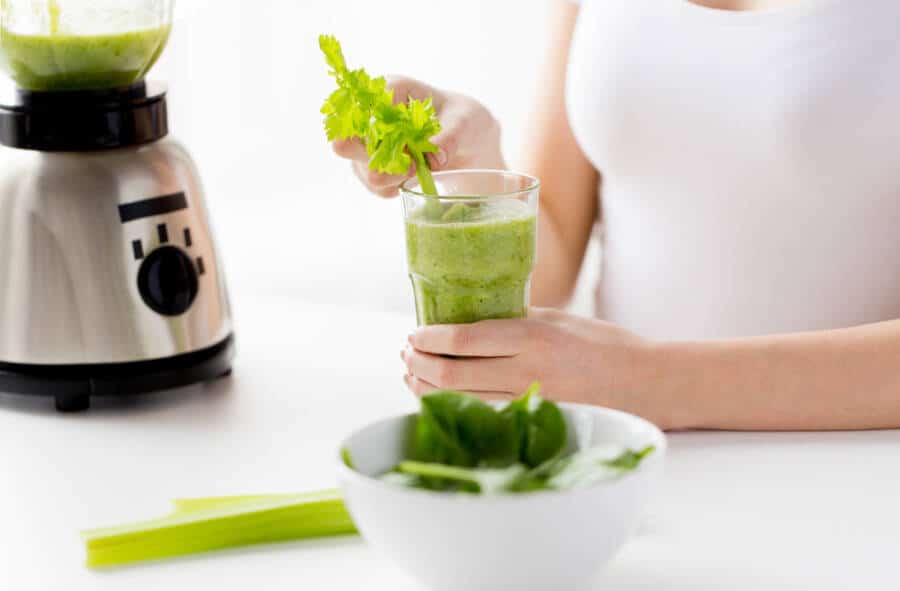Migraine attacks aren’t just your typical headaches. You can experience pounding pain, nausea, and major sensitivity to light and sound. When one of these migraine episodes occurs, you’ll do almost anything to make it go away.
Some main factors which can cause migraines are smoking, alcohol, stress, allergies, bright lights, loud noises, dehydration, irregular sleep, strong smells, skipping meals, poor posture, hormonal fluctuations, and even low blood sugar.
Symptoms of migraines are often straightforward, like tingling in the legs and arms, nausea, vomiting, irritability, food cravings, constipation, and a stiff neck.
If you’re suffering from migraines and you’re looking for any type of natural solution for symptoms of migraines that works quickly and effectively, this article is for YOU! Natural remedies can be drug-free options for reducing migraine symptoms.
At-home treatments might help prevent the onset of migraine attacks or at least help reduce their severity and duration. Not to mention, they’ll protect your liver because we all know that taking all those meds will mess with it!
Keep reading as we look at 9 natural remedies that may help you manage your migraine symptoms.
Note: Speak with a doctor about a treatment plan that works best for you. Migraine attacks might also require treatment with a prescription or over-the-counter medication.

Do You Suffer From Migraines?
Lavender Oil
Inhaling some lavender essential oil has been known to ease migraine pain. It can be inhaled directly or diluted with a carrier oil and massaged in small amounts on your temples and forehead.
A randomized controlled study found evidence that three months of lavender therapy as a prophylactic therapy before a migraine attack began reduced the frequency and severity of the attacks. Nevertheless, research is still limited.
Another 2020 review examined the ability of various herbal treatments, including lavender therapy, for migraines. The authors found mixed or little evidence to support the use of butterbur and feverfew for treating migraines.
But they did not note that current research supports the use of lavender. According to the authors, many studies had a high risk for bias, and more high-quality research is needed.
Here Are The Ways You Can Use This Remedy
You simply smell the soothing fragrance of lavender essential oil. It’s one of the easiest home remedies for migraines. Or you could put a few drops of the lavender essential oil on a tissue and inhale it.
Another option would be to put two drops of the lavender oil into the boiling water (two cups), and you can start inhaling the steam.
A fourth option would be to mix two or three drops of your lavender oil in one tablespoon of a carrier oil, such as olive oil or almond oil. Then, you use the mixture to massage your forehead gently.
Note: You should NEVER drink lavender oil.
Ginger
According to a few studies, ginger can prove effective in curing common migraines at home. It’s very well-known to ease nausea caused by many other conditions, including headaches. It has pain-relieving benefits for migraine attacks.
More research is needed to understand the extent and usefulness of ginger in treating migraine-related pain.
But here are the facts: Ginger can block prostaglandins, chemicals that promote muscle contractions, impact hormones, and regulate inflammation in your brain’s blood vessels.
Here Are The Ways You Can Use This Remedy
You should drink ginger tea several times during the day till you get relief. You have to make sure that you drink it when your headache begins.
Or you can simply chew a piece of fresh ginger root. It will also help treat your problem and reduce symptoms such as nausea and digestive distress.
Cayenne Pepper
Cayenne pepper is one of the most excellent home remedies for migraines because it improves blood flow and stimulates circulation. It also has capsaicin, a compound that acts as a natural painkiller.
Using something spicy might not seem like it would help treat inflammation and pain. But cayenne is one of the most natural home remedies for headaches. One of the main factors in pain perception is substance P, which is hindered by the capsaicin in cayenne.
This means that substance P makes you feel pain, but the capsaicin can get rid of it. According to The Clinical Journal, capsaicin has been known to reduce headaches significantly.
Here Are The Ways You Can Use This Remedy
You can mix about one teaspoon of cayenne pepper in a cup of lukewarm water. You can also add a bit of honey and some drops of lemon juice to improve the taste and health benefits. And drink as needed.
There’s also a second option. Prepare a quarter teaspoon of Cayenne powder, four ounces of warm water, and some cotton swabs. Dilute the cayenne powder in the water. Next, soak one cotton swab in this solution, and then stir it around to ensure it is covered because sometimes the powder can sink to the bottom. Apply the moist swab lightly to the inside of your nostril until you feel the heat. The feeling can be a little unpleasant, but when it subsides, your pain will hopefully be improved, or at least better than before.

Apple Cider Vinegar
Apple cider vinegar has been known for a while now as a nutritional powerhouse that helps reduce migraines.
It also offers health benefits such as aiding detoxification, regulating high blood pressure, controlling blood sugar, reducing bone pain, relieving constipation, and promoting weight loss.
Here Are The Ways You Can Use This Remedy
Combine 1 tablespoon of apple cider vinegar with a glass of water, and add a tablespoon of honey. Try to drink this mix every day to treat and prevent migraines.
A second option would be to mix two tablespoons of apple cider, two tablespoons of lemon juice, and two tablespoons of honey into about eight ounces of hot water. Drink it 2 to 3 times a day if you often suffer from headaches and migraines.
Or you can pour some steaming hot water into a large bowl and add 3 to 4 tablespoons of apple cider vinegar. Place a towel over your head and inhale the steam for about 10 to 15 minutes.
If you aren’t used to drinking apple cider vinegar, you can begin by taking one teaspoon and gradually increasing the amount. When migraines attack or whenever you feel them coming on, consume two or three tablespoons.
Peppermint
The menthol found in peppermint oil might help prevent those annoying episodes, although there’s a minimal amount of research. A 2019 study compared the effects of 4% nasal lidocaine with 1.5% peppermint essential oil and a placebo for managing migraine symptoms.
The researchers found that 40% of people in the lidocaine and peppermint oil groups experienced considerable improvements in their symptoms, compared with only 4.9% in placebo groups. Some experts are skeptical about peppermint leaves.
Still, some evidence suggests topical peppermint oil may benefit tension headaches. Peppermint contains an anti-inflammatory property that helps relax the nerves. Besides that, it has a calming and antispasmodic effect.
Here Are The Ways You Can Use This Remedy
Massage your jaw, temples, and behind your neck with one drop of peppermint essential oil or a mixture of lavender and peppermint.
Try to keep it on for 20 to 30 minutes.
Practice this a few times a day till you get the needed relief.
You can also create an herbal tea by mixing the dried peppermint with hot water. Just combine one teaspoon of dried peppermint, one cup of hot water, and some honey if you choose. Cover it for 10 minutes to let it infuse and slowly sip the tea.
Furthermore, inhaling the soothing fragrance of peppermint steam will also reduce headaches and related symptoms such as vomiting and nausea.
Rosemary
Rosemary oil, which contains rosmarinic acid, has been known to have anti-inflammatory and soothing properties. So it may help in treating your headaches as well as migraines.
Here Are The Ways You Can Use This Remedy
Mix several drops of rosemary oil with a tablespoon of a carrier oil. Use this mixture to massage your forehead and temples.
You can also make an herbal tea for yourself by boiling a teaspoon of crushed rosemary leaves and a teaspoon of crushed sage leaves in a cup of water. Be sure to cover it while boiling. When finished, allow it to steep for about 10 minutes, and let the tea cool to room temperature. It’s the perfect herbal tea to sip to get rid of your headache. Drink this tea two to three times per day. If you don’t have both herbs, you can create your herbal tea with just one of these above herbs.
Note: Be aware that rosemary oil isn’t suitable for people who suffer from high blood pressure or epilepsy.
Chamomile
Chamomile has anti-inflammatory, soothing, and antispasmodic properties that can help reduce migraines. When you drink chamomile tea regularly, it can help prevent the problem.
You will get the best results when using German chamomile to deal with migraines. So when you want to buy this herb, you should look for the label with “German chamomile.”
Here Are The Ways You Can Use This Remedy
Steep two or three teaspoons of dried-up chamomile flowers in a cup of hot water for several minutes. You can also mix in some honey and lemon juice. Then, you strain and drink the herbal tea three to four times each day to get rid of your migraines symptoms.
You can also make an herbal tea by mixing equal quantities of chamomile, meadowsweet, and horehound and let them infuse in a mug of hot water for around five minutes. Strain, and drink it. Repeat as needed.
Cloves
Using cloves is one of the best natural home remedies for those annoying headaches because they contain pain-relieving and cooling properties.
Here Are The Ways You Can Use This Remedy
Lightly crush up a few cloves. Then, you put them into a clean handkerchief or a sachet. Carry it around with you, and you can inhale the fragrance of the crushed cloves when you feel headaches or migraines coming on.
You can also mix two drops of clove oil with a tablespoon of carrier oil. Use it to massage your temples and forehead.
Another option would be to mix two teaspoons of coconut oil, one teaspoon of sea salt, and two drops of clove oil. Proceed to rub this mixture lightly on your forehead.

Massage
Massages may reduce headache frequency. They’ve been associated with low serotonin in the brain, and a massage increases serotonin levels. There’s limited evidence to support massage for this type of relief, but it’s generally safe and has a low risk of side effects.
Massaging your head helps reduce any kind of headaches because it can block the pain signals sent to your brain. It also promotes serotonin activity and boosts specific serotonin receptors. Therefore, it can help reduce the symptoms and frequency of your migraines.
Here Are The Ways You Can Use This Remedy
You can massage your head gently using two index fingers in a circular motion. While rubbing, you have to keep in mind that you need to practice on pressure points at locations such as the base of your skull, middle of your forehead, and corners of your eyes that, when pressed correctly help reduce your pain.
Another great option would be to heat up two tablespoons of sesame oil.
Mix it with a bit of cardamom powder and half a teaspoon of cinnamon.
And apply this mixture to your forehead and massage. It would be best if kept on for several hours before rinsing off.
You can repeat either of these solutions whenever needed. As a rule, regular massages can help relieve the duration and frequency of your migraines.
Final Thoughts? Avoid Particular Foods
Diet plays a key role in preventing most migraine attacks. Did you know that certain foods and beverages may be migraine triggers? They include:
- Foods that contain nitrates: hot dogs, deli meats, bacon, sausage, and chocolate
- Cheese that contains the naturally occurring compound tyramine: blue, feta, cheddar, Parmesan, and Swiss
- Cultured dairy products: buttermilk, sour cream, and yogurt
- Alcohol, especially red wine
- Foods that contain MSG; processed foods; pickled foods
- Foods that are very cold, like ice cream or iced drinks
- Dried fruits; beans
Studies show that a small amount of caffeine may also ease migraine pain in some people. Caffeine is even in some migraine medications. But be aware: too much caffeine may cause a migraine attack, and not enough may lead to a severe caffeine withdrawal headache.
It would help you figure out which foods and beverages trigger migraine attacks if you kept a daily food journal (this one is the nutritionists’ favorite). Write down everything you eat and see how you feel afterward.
Be sure to let us know how these natural remedies work for you. And for some more healthy reads, check out Sleep: 7 Reasons Why You Should Prioritize It.





